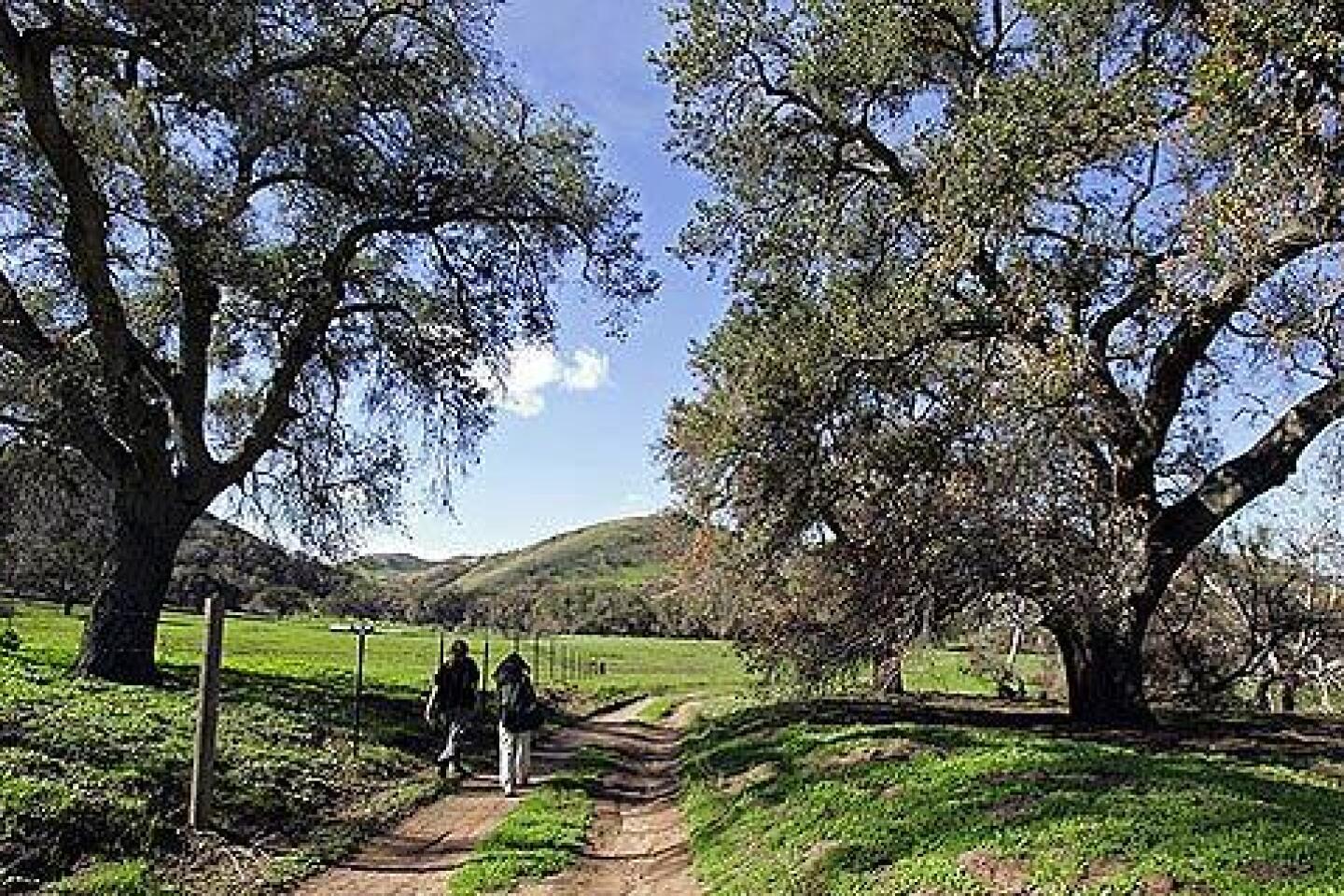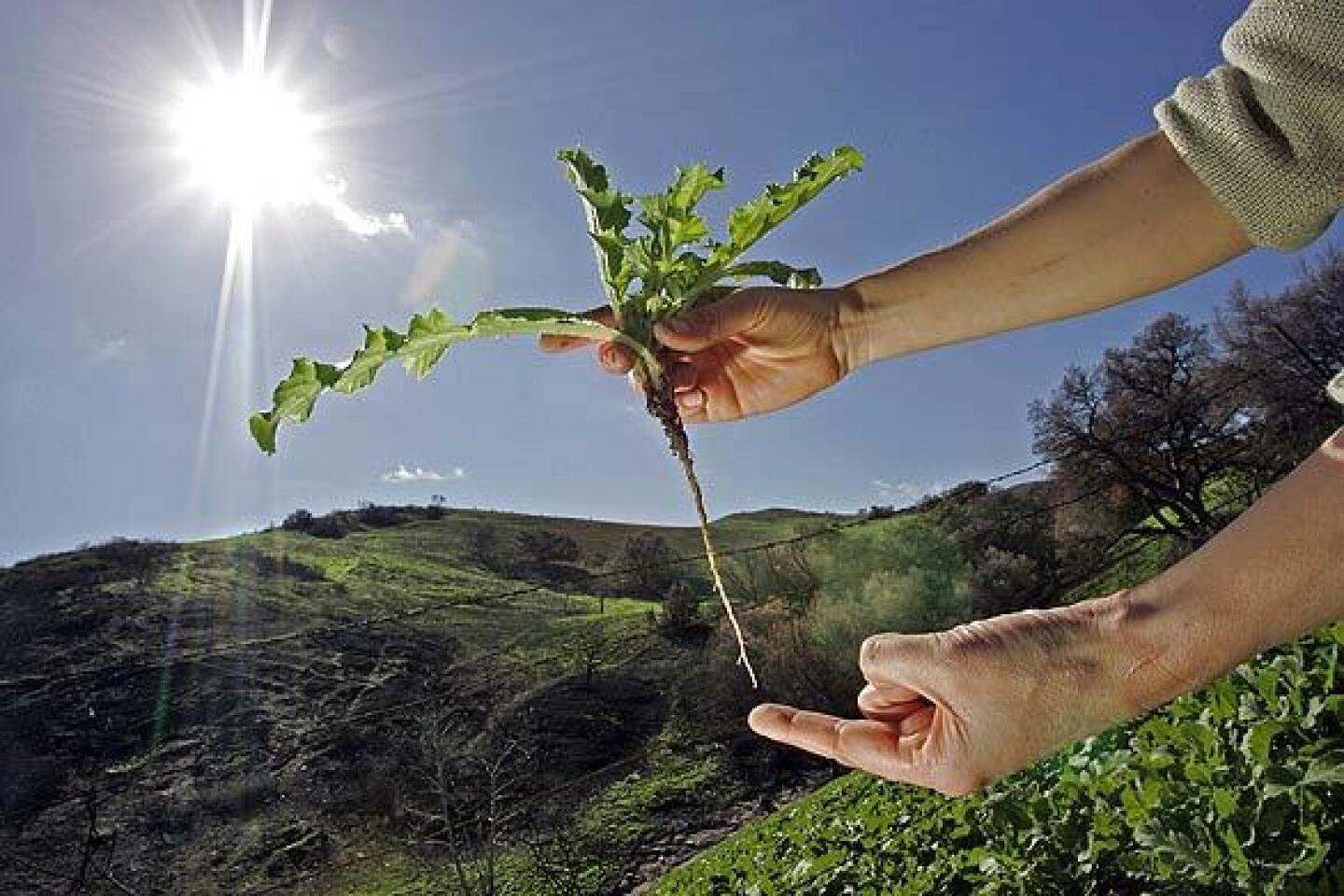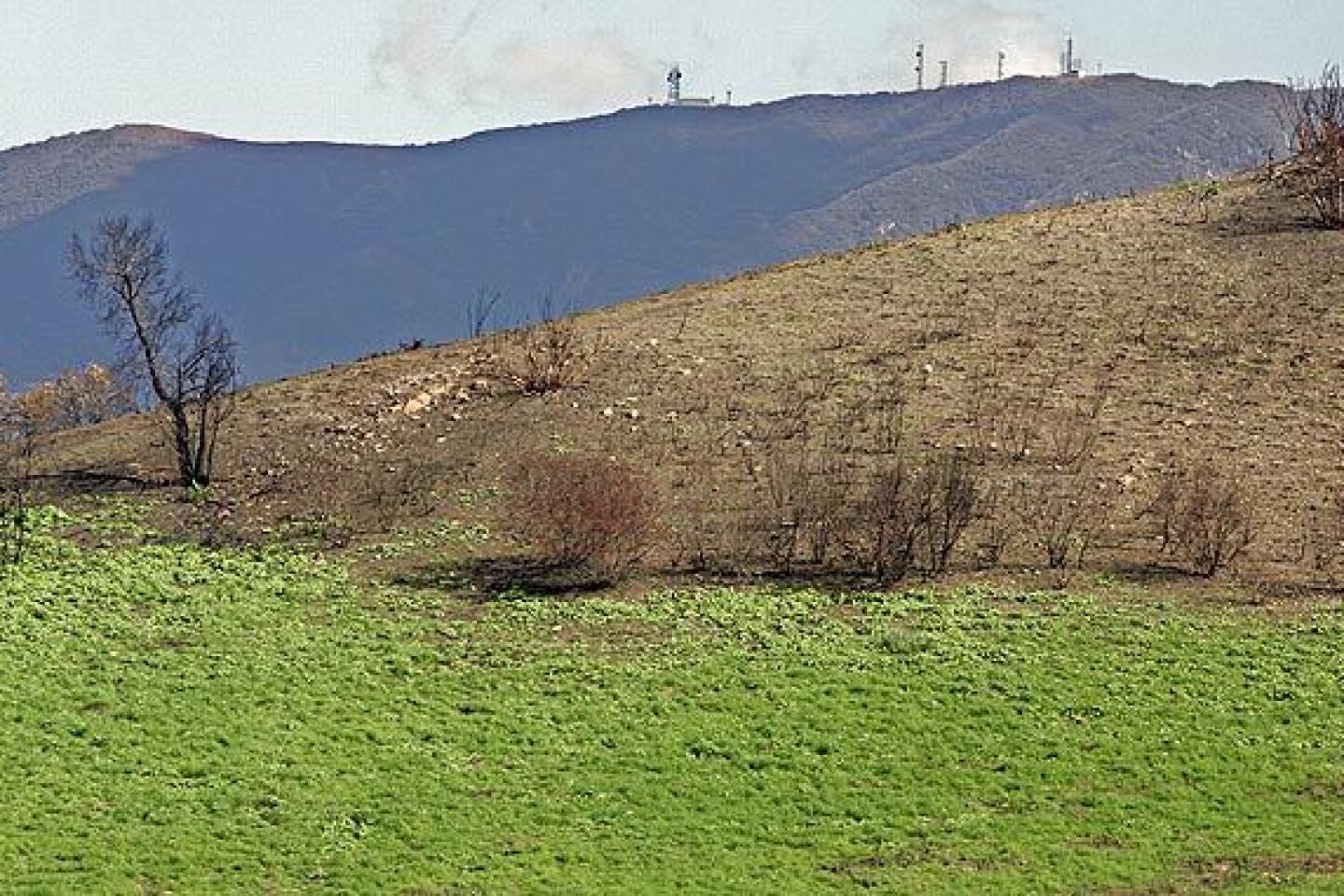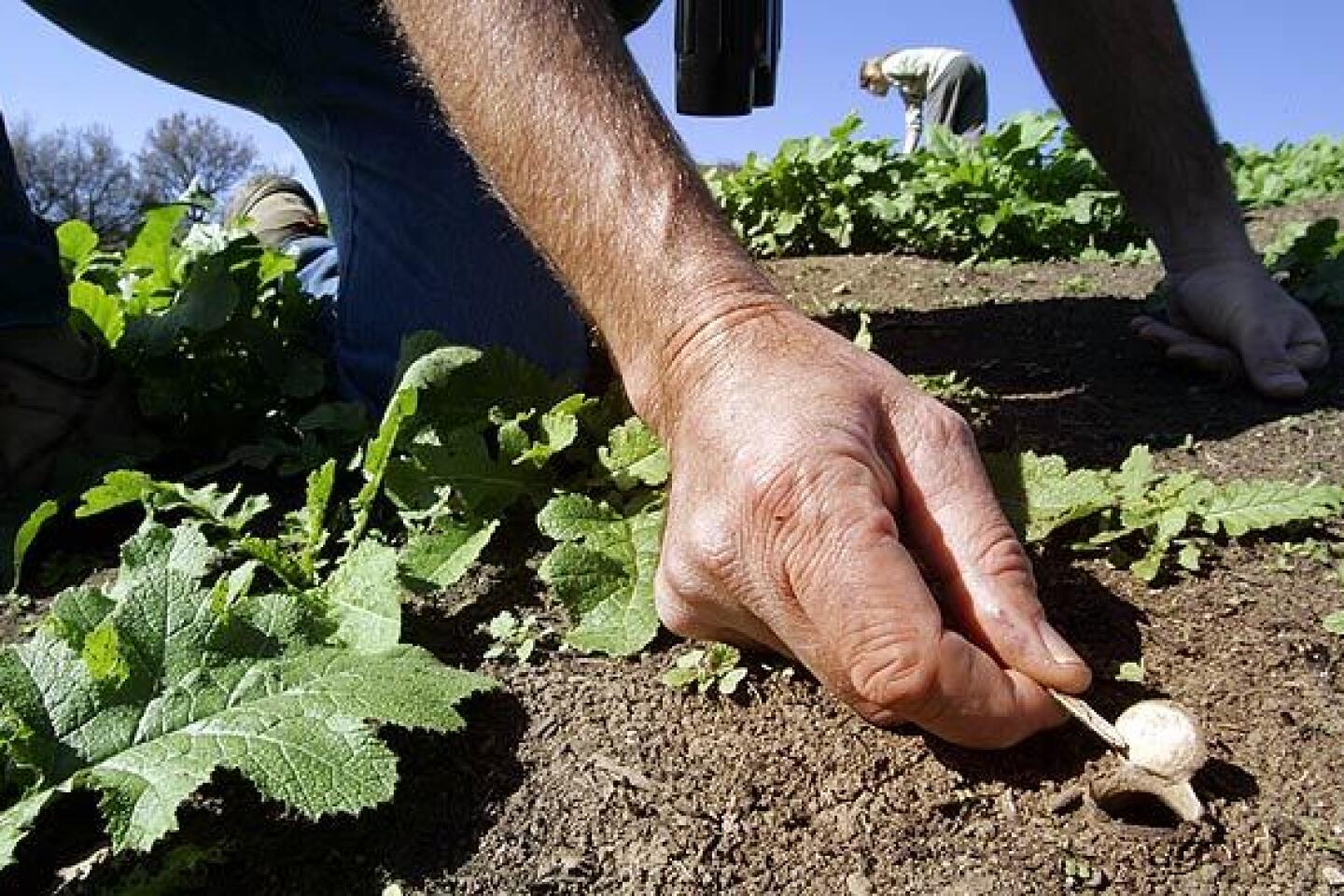The hills are green, but all’s not well
- Share via
Recent downpours have turned Orange County foothills charred by October’s ferocious Santiago fire a vivid emerald green. From a distance, the explosion of life offers a powerful testament to nature’s resilience. Up close, it also provides a worrisome omen for the months ahead.
“When I look up there and see green, that tells me that’s a real hammered habitat,” said David Olson, director of science and stewardship for the Irvine Ranch Conservancy, which manages thousands of acres of Orange County open space.
FOR THE RECORD:
Nonnative plants: An article in Sunday’s California section on the proliferation of nonnative plants following last fall’s wildfires omitted the first name and identification of a scientist with the U.S. Geological Survey. Jon Keeley was the scientist who commented that much of the native landscape has already been lost. —
As scientists comb through Southern California’s burnt landscape, they’re finding new evidence that frequent fires are gradually replacing chaparral and sagebrush with highly flammable and prolific nonnative weeds.
Orange County’s canyons offer a stark illustration. The 28,400 acres that burned over three weeks are in various stages of recovery. Upper elevations of the Santa Ana Mountains remain a moonscape.
But throughout the foothills, weeds are in full bloom amid blackened native sagebrush and grass.
Known as “type conversion,” the landscape change is having a profound effect: extending the region’s annual fire season, deepening the threat of mudslides and endangering animal species.
The culprit isn’t the size of wildfires, but their frequency. Ecosystems forged over time to thrive by being burned every 60 to 100 years are now being scorched every 10 to 15 years -- or even more often.
Nonnative weeds have been encroaching on Southern California’s wild lands for centuries, carried over in the hoofs of Spanish livestock, accidentally spread through contaminated crop seed, intentionally planted along streams to control erosion.
In recent years, scientists have argued that a fire frequency that would benefit a conifer forest through thinning would destroy a coastal ecology by helping to spread invasive species, such as mustard, star thistle and ripgut brome.
Rich Hawkins, a veteran fire chief for the Cleveland National Forest, learned the rule of thumb from an old forest ranger 30 years ago.
“If a site burns three times within 20 years,” Hawkins said, “you’ll see most of the chaparral lost on that site.”
Because of imprecise historical habitat mapping, just how much of Southern California’s wild lands have undergone type conversion because of fire is unknown.
“But clearly, a large part of the native landscape has already been lost,” Keeley said.
Firefighters hate nonnative weeds as much as biologists do. Mustard, for instance, can quickly grow hip high with winter rains, then dry out just as fast, becoming a field of kindling.
It’s one reason the region’s fire season is getting longer and more destructive. “It makes it impossible to fight a wind-driven fire,” Hawkins said. “That’s why thousands of homes burned down in San Diego County.”
And if dry weeds help ignite adjacent healthy ecosystems year after year, they too will eventually yield to weeds.
“You see [the loss] most pronounced in the San Diego and inland mountain regions,” Hawkins said.
Remote areas of the Santa Ana Mountains torched by the Santiago fire can recover -- but only if they remain fire free for several decades.
“Five years from now, if I see that [type conversion] in those mountain areas, I’ll feel that most of Southern California will eventually convert to grass,” Hawkins said.
Soon after fire ripped through the canyons of the Irvine Ranch Conservancy, Olson surveyed the smoldering landscape to assess the damage: dead animals, devastated stands of live oak and sycamores, hillsides stripped of sage.
Since then, remote video cameras have captured the return of deer, coyotes, bobcats and mountain lions.
Many burned oaks are sprouting new growth in their crowns, and thatches of native needle grass are abundant.
Other areas are under attack.
In rugged Hicks Canyon, carpets of green mustard plants are interspersed with swaths of charred ground that were thick with sage scrub before the Santiago fire.
Biologically speaking, the charred area is relatively healthy. The green area is not.
“If you burn that a couple more times, you’ll lose it and it will look like this,” Olson said, pointing to a field of mustard.
The long-term threat can be seen in the destruction of cholla cactus. Because it can take decades to mature, the cactus is a bellwether for type conversion caused by repeated fire.
The cholla cactus is vital to the cactus wren, which nests in the plant’s sprawling spiny stalks to protect itself from prey. The plants are disappearing so quickly that Olson is experimenting with fake cactuses made from metal and concertina wire to help the nesting birds
“This was one of the best patches left in this region,” Olson said, surveying a field of charred cactus skeletons. “They just got melted. I don’t know if these guys are going to come back.”
More to Read
Sign up for Essential California
The most important California stories and recommendations in your inbox every morning.
You may occasionally receive promotional content from the Los Angeles Times.















